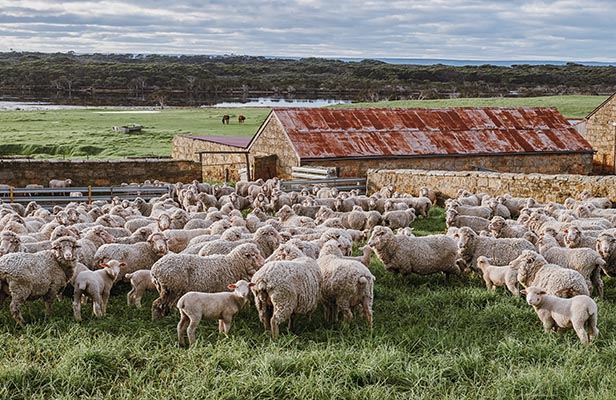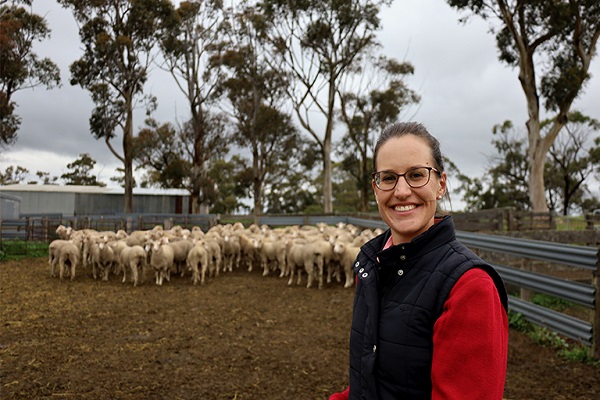Weaning can be a stressful time for lambs, so how do we best manage the transition of weaners onto green pasture or sown crops? Elders Livestock Production Specialist Emma Shattock explains some strategies you could implement.

The challenges
Green feed is rapidly digested and often high in nitrates, leading to issues such as bloat, scouring, weight loss and photosensitisation. If you have locked up a paddock to wean onto, chances are this will be a richer feed than the lambs are currently on.
This change of feed, combined with the stress of weaning can exacerbate the issues previously mentioned, as well as open lambs up to the risk of pulpy kidney and consequent death.
Key steps
One of the most important steps is to make sure lambs are not hungry when going out onto rich green feed. This is best done by filling them up on cereal hay before putting them into the paddock; yarding them overnight if needed. By starting with a full gut, they are less likely to gorge on the green feed. Continue feeding cereal hay in the paddock.
Yarding also provides an opportunity to adjust lambs onto supplements that you wish to feed after weaning. However, for better results, introduce any feeds/supplements that will be fed after weaning while the lambs are still with the ewes.
It is also important that the lambs have had their booster vaccination for pulpy kidney and other clostridial diseases.
Speak with your local Elders Livestock Production Advisor to learn how to best implement these strategies in your operation.
Boosting animal performance
Green feed presents a big challenge for nutrient imbalance, particularly due to high nitrogen and low magnesium levels. These are best balanced with a specialised green feed mineral supplement. These supplements help improve feed conversions, meaning the potential for more stock to be finished on the same amount of feed. A win-win!
The super start
One of the most valuable tools at weaning is a nutritional stress supplement. These products help to calm the lambs and reduce the stress of weaning. The benefit is that we can increase appetite and minimise weight loss, reducing the effects of a post-weaning check.
Disclaimer - important, please read:
The information contained in this article is given for general information purposes only, current at the time of first publication, and does not constitute professional advice. The article has been independently created by a human author using some degree of creativity through consultation with various third-party sources. Third party information has been sourced from means which Elders consider to be reliable. However, Elders has not independently verified the information and cannot guarantee its accuracy. Links or references to third party sources are provided for convenience only and do not constitute endorsement of material by third parties or any associated product or service offering. While Elders has exercised reasonable care, skill and diligence in preparation of this article, many factors including environmental/seasonal factors and market conditions can impact its accuracy and currency. The information should not be relied upon under any circumstances and, to the extent permitted by law, Elders disclaim liability for any loss or damage arising out of any reliance upon the information contained in this article. If you would like to speak to someone for tailored advice specific to your circumstances relating to any of the matters referred to in this article, please contact Elders.

